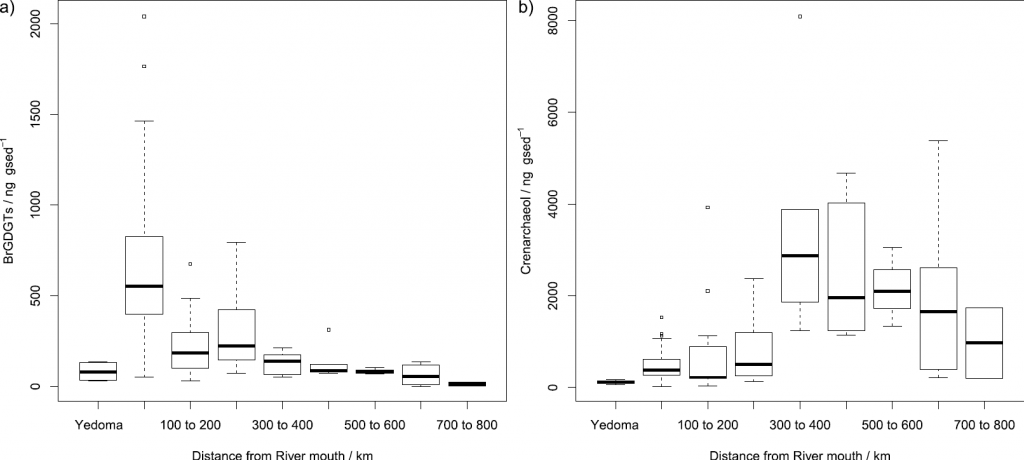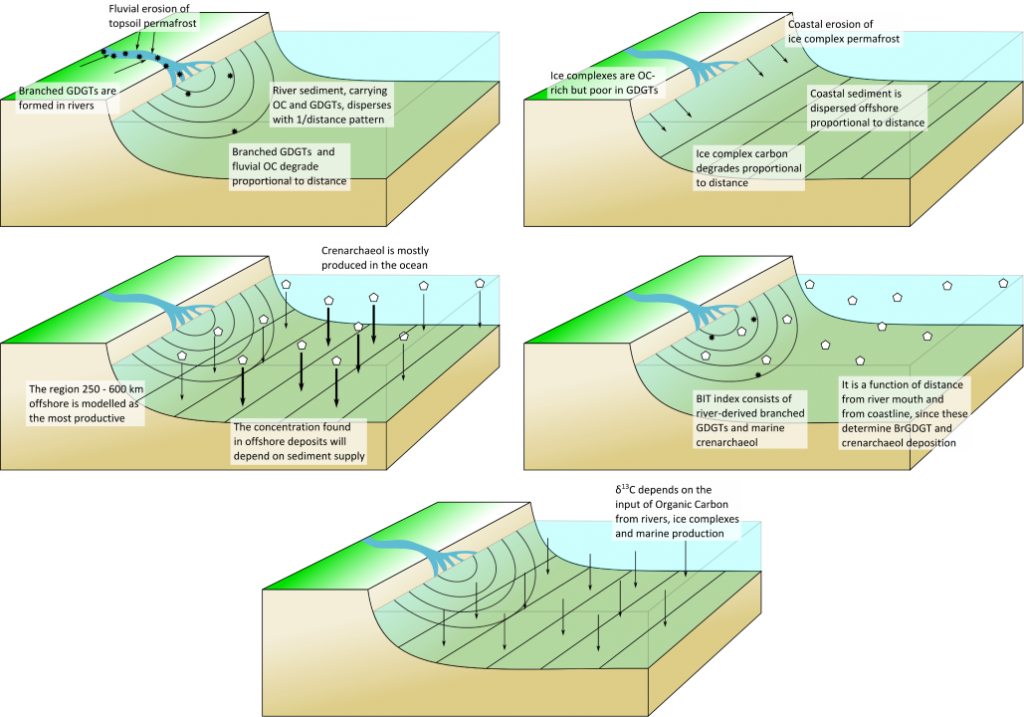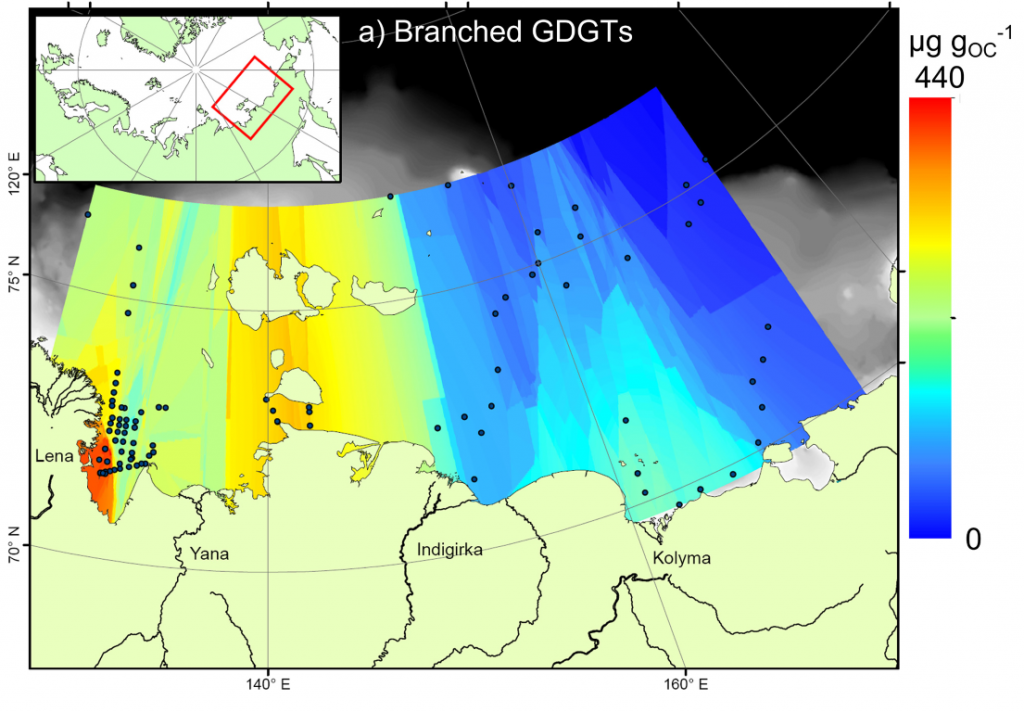Our paper, “GDGT distributions on the East Siberian Arctic Shelf: implications for organic carbon export, burial and degradation” has now been published. You can download the paper, and the underlying data, from the Biogeosciences website here.
As I mentioned before, this paper has been submitted, reviewed and published completely open-access. This means that the original paper, the reviews and our response are all archived online forever. All of this is available freely to anyone, without the need to pay for access. You are free to copy, distribute and make use of the data and graphs as long as the original paper is cited (also known as a CC-BY copyright license)

In the paper we show the first map of GDGT biomarkers from the East Siberian Arctic Shelf. This region is extremely remote yet very important within the global carbon cycle. Our work shows that this is an area of complex interaction between rivers, coastal erosion and open ocean productivity. The GDGT biomarkers are very useful here as a tracer of carbon being washed away by the rivers and being produced in the oceans, and this allowed me to make a model of the Arctic Ocean in this region to better understand how all of the different processes interact.

As an author, the publishing process for Biogeosciences was interestingly different. There was a reasonable amount of time between submitting the paper and final publication, but that was mostly due to the interactive public discussion stage which most journals do not have. During this time the paper was available and citable, which means that although it was relatively slow progress towards final publication the story was out there very quickly. I’m keen to go for this style of publishing again in the future.
